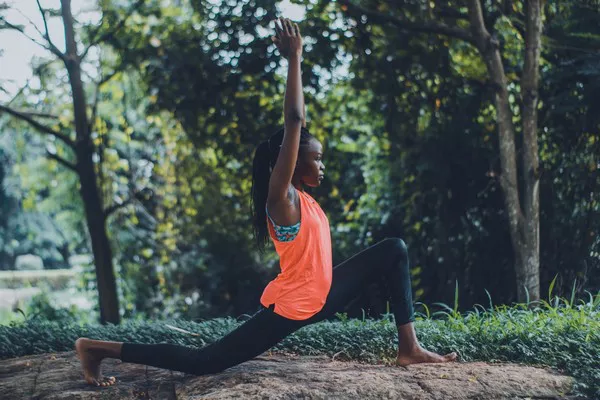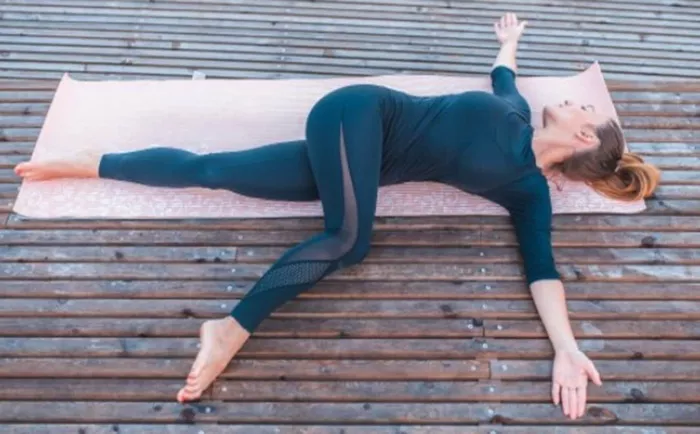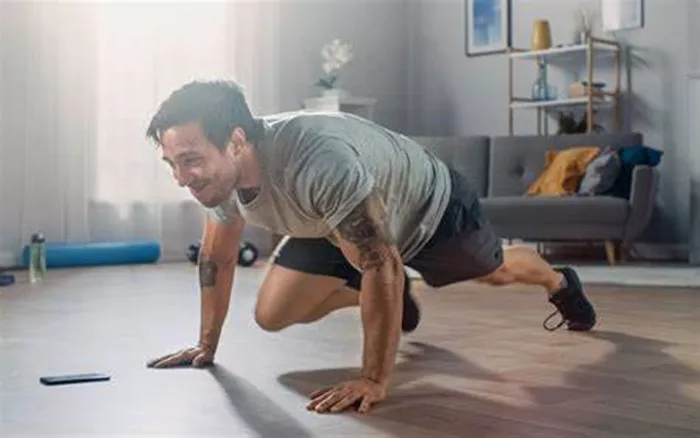In the world of fitness, sometimes the most effective tools are also the simplest. The step bench, also known as an aerobic step, is one such tool. Compact, portable, and incredibly versatile, this platform has been a gym staple for decades—and for good reason. Whether you’re training at home or in a studio, the step bench can unlock a world of workouts that target every muscle group, boost your heart rate, and improve balance, agility, and coordination.
At first glance, it may look like a basic piece of equipment, but the step bench is far from boring. It adds elevation to standard bodyweight movements, increases intensity, and brings a new layer of challenge to your workouts. It’s suitable for all levels—from beginners looking to get fit to athletes seeking powerful, high-intensity routines. With the right moves, a step bench transforms your workout into a dynamic experience that burns calories, tones muscle, and keeps your body guessing.
The Hidden Benefits of Step Bench Training
Why choose a step bench workout over traditional bodyweight exercises? The answer lies in elevation and mobility. Stepping up and down elevates your heart rate quickly, making it a great tool for cardio. But the benefits go beyond cardiovascular endurance. The step engages the legs more intensely than exercises performed on a flat surface. As a result, you build stronger glutes, quads, hamstrings, and calves.
Additionally, a step bench is excellent for enhancing core stability and improving proprioception—your body’s awareness of movement and position. With each step, your muscles work to maintain balance, activating your core and strengthening stabilizing muscles that often go underused. Over time, this improves posture, coordination, and functional strength. It also makes daily activities, such as climbing stairs or walking uphill, feel easier.
Getting Started: Step Bench Setup and Safety Tips
Before diving into step exercises, it’s important to set yourself up for success. Choose a bench that’s sturdy and slip-resistant. Most adjustable models allow you to raise or lower the height depending on your fitness level. Beginners should start with a lower step, typically 4 to 6 inches high, while advanced users may go up to 10 inches or more.
Place the step bench on a flat, non-slip surface. Wear athletic shoes with proper grip and support. Begin each session with a warm-up—5 minutes of light marching or dynamic stretches to increase blood flow. Always focus on proper form: step fully onto the bench, avoid locking your knees, and engage your core to maintain balance. Never jump down recklessly; instead, step off gently to reduce impact on your joints.
Cardio-Pumping Moves to Boost Heart Rate
One of the most popular uses of the step bench is for cardio workouts. The constant up-and-down motion increases heart rate and burns fat quickly. Start with basic step-ups: step onto the bench with one foot, bring the other foot up, then step back down. Increase speed as you gain confidence. Alternate lead legs to ensure balanced development.
Another heart-pumping move is the knee drive. Step onto the bench with one foot and bring the opposite knee toward your chest. This adds a core element while improving lower-body strength. For more intensity, try lateral step-overs: move side-to-side across the bench with quick, light feet. These exercises are perfect for building endurance and stamina without needing a treadmill or bike.
Lower Body Toning With Simple Step Exercises
The step bench is a powerhouse for leg and glute training. Try elevated lunges to target your quads and glutes. Stand facing away from the bench, place one foot behind you on the platform, and bend your front knee into a lunge. This Bulgarian split squat variation increases the range of motion and forces the front leg to work harder, delivering excellent strength and toning results.
Another effective move is the step squat. Stand to the side of the bench, step one foot up and squat down, then return to the start position. This targets your thighs, hips, and glutes with added balance training. Calf raises on the edge of the bench also sculpt and define your lower legs, especially when performed slowly and with control. Repeat each exercise for 12–15 reps for three rounds to build muscle endurance.
Core Exercises That Use the Step for Extra Challenge
While the step bench is often associated with cardio or leg workouts, it’s also a fantastic platform for core exercises. Try incline mountain climbers by placing your hands on the bench and driving your knees to your chest, one at a time. The elevation changes the angle of resistance, making the move more challenging for your core.
For a powerful ab move, do plank jacks on the step. Start in a plank position with your hands on the bench and feet together behind you. Jump your feet out wide and then back together, all while keeping your body straight and abs tight. You can also perform step leg lifts by sitting on the edge, leaning back slightly, and lifting both legs up and down. This works the lower abs while testing your balance and core strength.
Upper Body Strength Training Using the Step Bench
The step isn’t just for the lower body—it can help sculpt strong arms, shoulders, and chest too. Begin with incline push-ups. Place your hands on the bench and your feet on the floor. Keep your body straight and lower your chest until your elbows reach a 90-degree angle. This variation is easier than a standard push-up but still targets the chest and triceps effectively.
For a greater challenge, try decline push-ups by placing your feet on the bench and your hands on the ground. This emphasizes your shoulders and upper chest. Triceps dips are another great upper body move. Sit on the edge of the bench, hands beside your hips, and lower your body by bending your elbows. Straighten your arms to push back up. This exercise targets the back of your arms and builds upper body endurance.
Full-Body Step Circuits for Maximum Results
Combining cardio, strength, and core exercises into a single step bench circuit delivers a complete workout. Try this 20-minute routine: begin with one minute of step-ups, followed by 15 step squats, 12 incline push-ups, and 30 seconds of mountain climbers. Rest for 30 seconds and repeat the circuit three times.
This type of workout is time-efficient and keeps your body moving from one exercise to the next. It raises your heart rate, burns calories, and builds muscle all at once. You can create your own circuit using your favorite moves, adjusting duration and reps based on your goals. Add light dumbbells or resistance bands to increase intensity and make the workout even more challenging.
Advanced Moves for Experienced Exercisers
Once you’re comfortable with basic step exercises, it’s time to level up. Try plyometric step-ups. With one foot on the bench, explode upward and switch feet mid-air, landing softly. This high-intensity move builds explosive power and coordination. Box jumps are another advanced option. Jump onto the bench with both feet, stand tall, then step down. This builds leg strength and agility.
For a cardio-core hybrid, perform burpee step-overs. Do a burpee on one side of the bench, then step or jump over it and repeat on the other side. You can also try push-up to side planks using the bench for support. These movements challenge your muscles and cardiovascular system at once, making them ideal for athletes or anyone looking to break through a plateau.
Cool Down and Stretching With the Step Bench
After an intense workout, cooling down is essential. Use the step bench to stretch your hamstrings by placing one foot on the bench and reaching toward your toes. For hip flexors, kneel on one knee beside the bench and push your hips forward. You can also use the bench for a seated twist or gentle back stretch.
Stretching improves flexibility, reduces muscle soreness, and helps your body transition from workout mode to rest. Spend at least five minutes cooling down to allow your heart rate to lower gradually. This is also a great time to reflect on your progress and plan your next session.
Who Should Use a Step Bench?
Step bench workouts are suitable for almost everyone. Beginners can start slow and focus on basic movements. Intermediate users can build up to circuits and resistance training. Advanced exercisers can incorporate high-intensity moves and strength challenges. The adjustable nature of the bench means you can tailor every exercise to your current fitness level.
It’s especially useful for people who want to work out at home with minimal space and equipment. It’s also perfect for cross-training days, low-impact workouts, or recovery sessions. With endless combinations and progressions, the step bench will never collect dust in your fitness routine.
Final Thoughts
The step bench may be simple, but it packs a powerful punch. It brings intensity, variety, and efficiency to your workouts in a way that’s hard to match with other equipment. Whether you want to burn fat, build muscle, or improve coordination, the step bench can help you get there—without ever stepping foot in a gym.
By mastering step bench exercises, you open the door to dynamic, full-body workouts that are fun, effective, and endlessly adaptable. So step up, stay consistent, and let each workout bring you one step closer to your fitness goals.
Related Topics


































